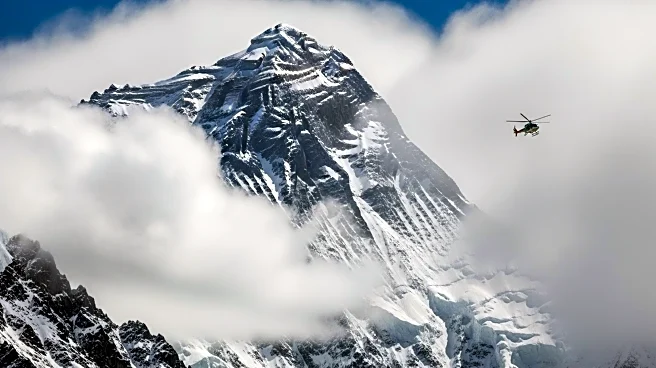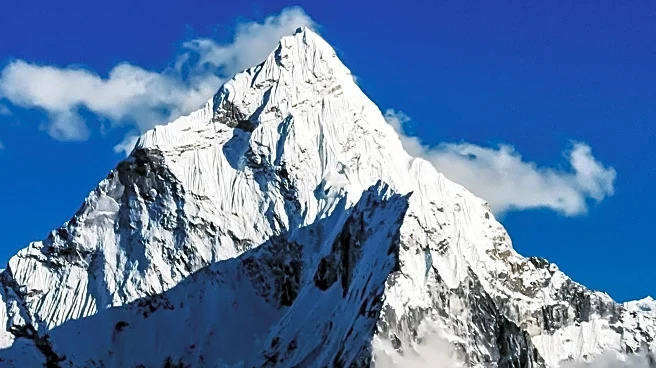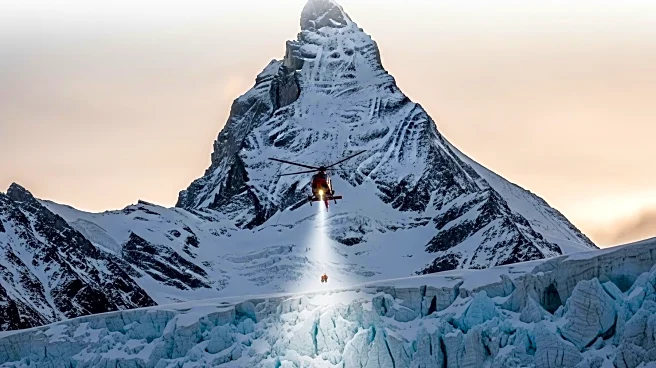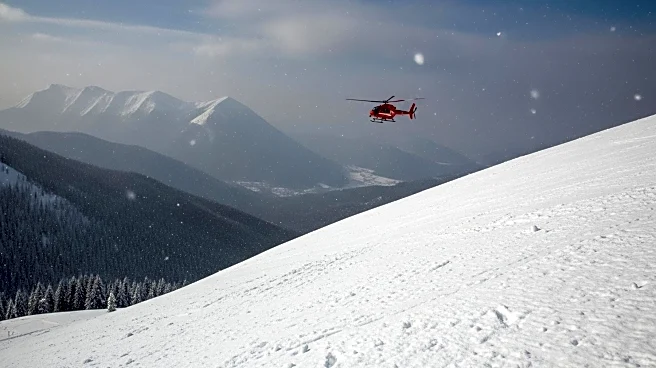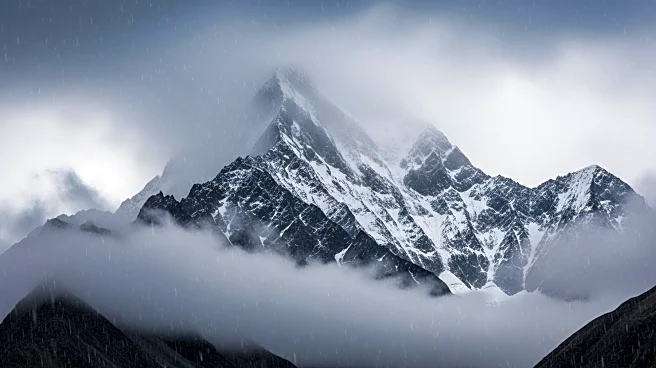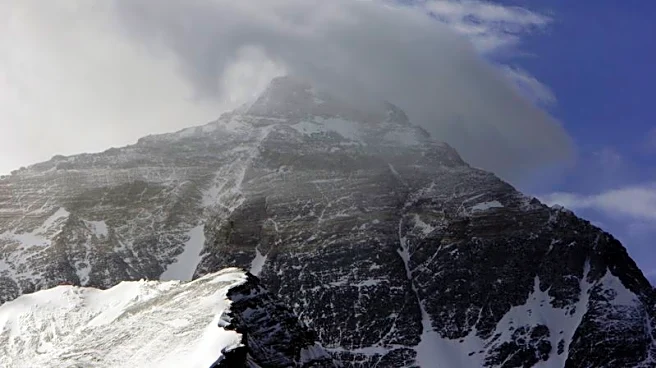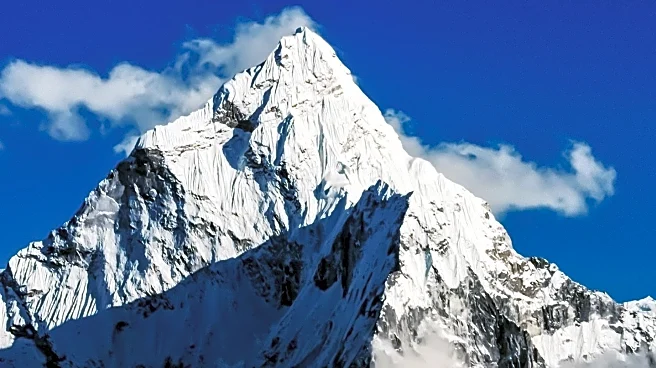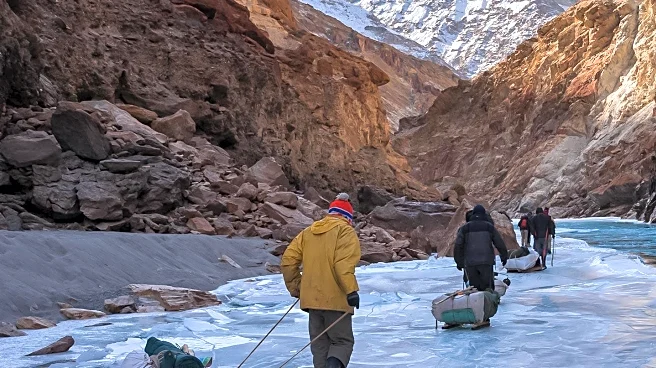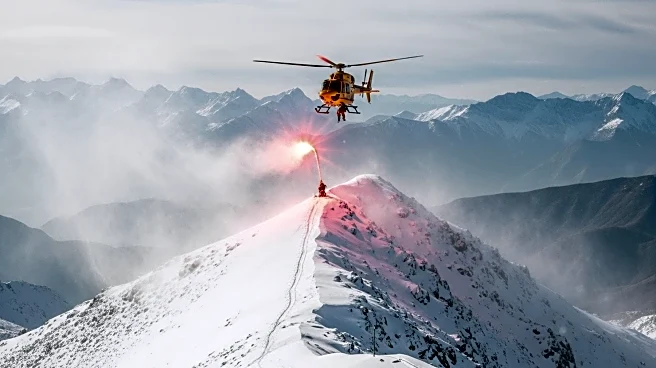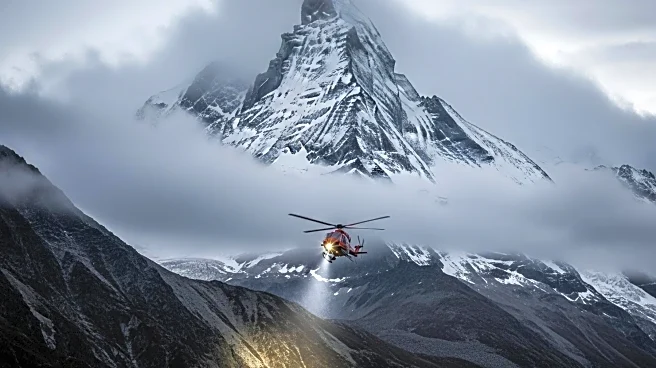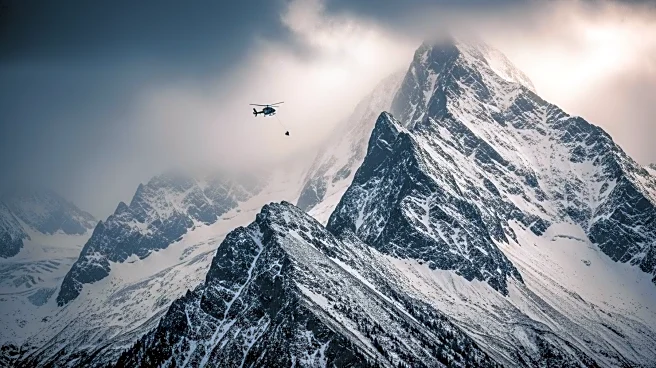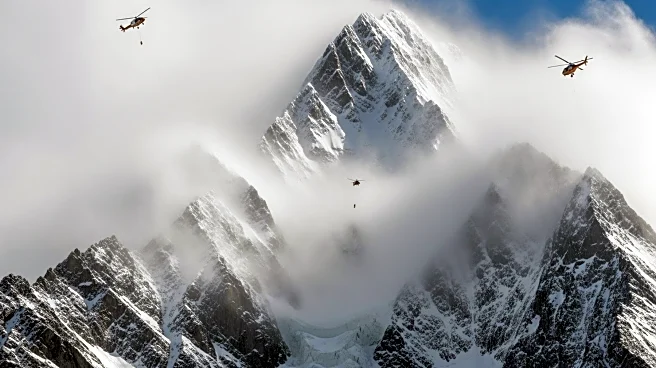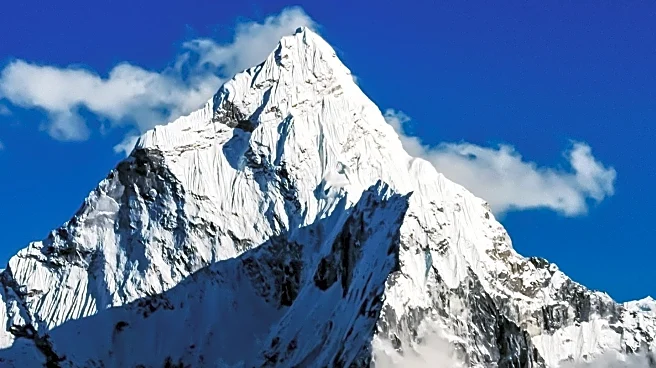What is the story about?
What's Happening?
A severe blizzard on the Tibetan slopes of Mount Everest trapped nearly 1,000 trekkers, climbers, and support personnel, prompting a large-scale rescue operation. The storm, which struck during China's eight-day National Day holiday, left campsites buried under snow and many tents collapsed. As of Sunday, 350 trekkers had been safely guided to the township of Qudang, with contact made with over 200 additional trekkers. The rescue efforts were initiated late Friday as the snowfall intensified, posing significant risks of hypothermia due to the high elevation and sudden weather change. The affected area, the remote Karma valley leading to the Kangshung face of Everest, sits at elevations above 13,800 feet. The event underscores the increasing impact of severe weather in the Himalayas, with similar disruptions occurring in neighboring Nepal.
Why It's Important?
The incident highlights the growing challenges posed by extreme weather conditions in the Himalayas, a region already vulnerable to climate change. The blizzard not only endangered the lives of nearly 1,000 individuals but also disrupted a popular trekking route during a peak travel season. This event raises concerns about the preparedness of emergency services and the safety of climbers in such remote and high-risk areas. The broader implications include potential impacts on tourism, a significant economic driver for the region, and the need for improved weather forecasting and emergency response strategies. Additionally, the simultaneous severe weather events in Nepal and the impact of Typhoon Matmo in China illustrate the broader regional vulnerabilities to climate change.
What's Next?
Rescue operations are ongoing, with efforts focused on guiding the remaining trekkers to safety. Authorities have suspended ticket sales and entry to the Everest Scenic Area to facilitate these efforts and prevent further risks. The incident may prompt a reevaluation of safety protocols and emergency preparedness measures for trekking and climbing activities in the region. Additionally, there may be increased scrutiny on the impact of climate change on weather patterns in the Himalayas, potentially leading to policy changes or increased investment in climate resilience and adaptation strategies.
Beyond the Headlines
The blizzard on Mount Everest serves as a stark reminder of the unpredictable and potentially deadly nature of high-altitude trekking. It also highlights the ethical responsibility of tour operators and local authorities to ensure the safety of adventurers in such environments. The incident may lead to discussions about the balance between promoting tourism and ensuring the safety and sustainability of natural attractions. Furthermore, the event could trigger a broader conversation about the role of climate change in altering weather patterns and the need for global cooperation to address these challenges.
AI Generated Content
Do you find this article useful?
